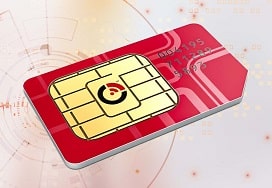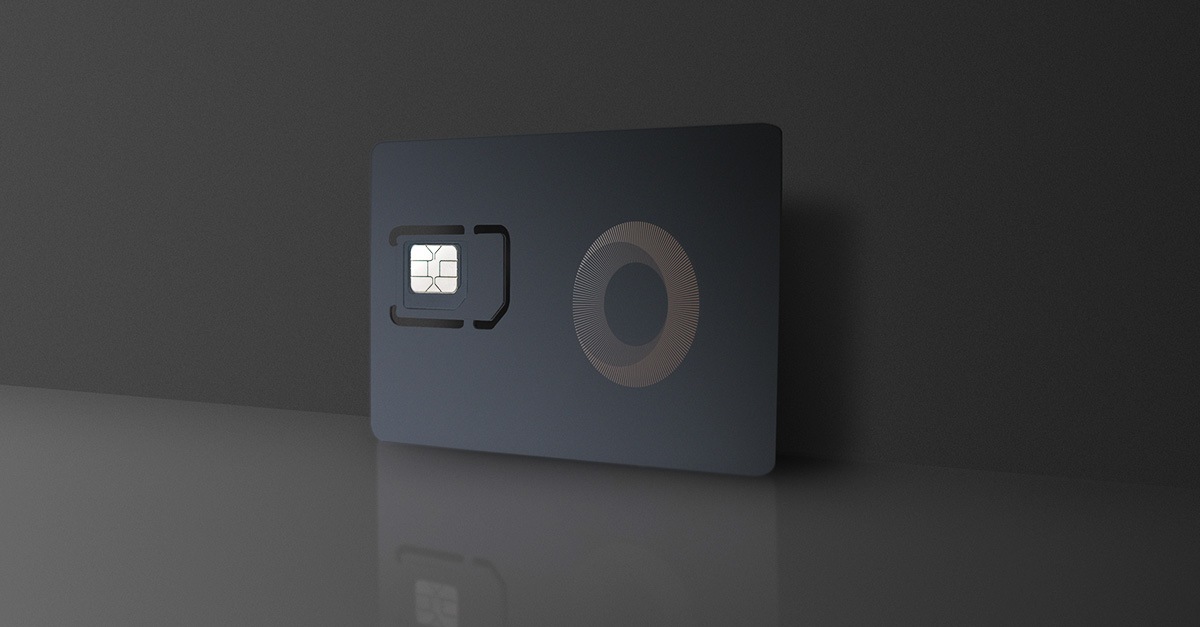IoT Connectivity Management Market for IoT Connectivity Management Platforms
IoT Connectivity Management Market for IoT Connectivity Management Platforms
Blog Article
Wireless IoT Connectivity Enterprise Managed IoT Connectivity Services

The world has witnessed a significant transformation in the way in which we work together with our dwelling spaces. Smart homes, geared up with linked units, have risen dramatically in recognition, offering enhanced convenience, safety, and energy effectivity. However, achieving seamless integration of all these devices closely depends on effective IoT connectivity options.
Various connectivity technologies facilitate communication between gadgets, making certain that each element of the smart home works harmoniously. Choosing the most effective IoT connectivity options for smart homes is essential for creating an environment friendly and responsive environment. These solutions differ by means of range, power consumption, and the forms of units they help, allowing customers to tailor their smart house ecosystems to their particular wants.
Wi-Fi is among the most generally used connectivity solutions, primarily because of its ubiquitous nature and high information transfer rates. Many smart house devices are already designed to connect effortlessly to existing Wi-Fi networks. This makes including new units comparatively simple. Tablets, smartphones, and routers can usually support multiple units concurrently, making it a convenient possibility for smart house lovers.
Internet Connectivity In IoT IoT Connectivity Management for Solutions
However, Wi-Fi isn't with out its challenges. The dependence on a steady internet connection can occasionally lead to efficiency issues, especially with a quantity of devices trying to communicate without delay. Furthermore, the range could be restricted relying on the format of the home. Walls and different limitations can cause signal degradation, which might hinder the performance of devices situated removed from the router.

Zigbee is another compelling option for IoT connectivity in smart properties. This technology supports low-power gadgets, making it appropriate for battery-operated sensors and devices. Zigbee creates a mesh network, which means every related system acts as a relay, expanding the vary of connectivity inside the home. This is particularly useful in larger areas the place traditional Wi-Fi might wrestle.
IoT Connectivity Sim Consolidation of IoT Connectivity
Z-Wave provides to the suite of options available for smart houses. It operates on a lower frequency than Wi-Fi, which means it may possibly higher penetrate walls and keep away from interference from other digital devices. Z-Wave is engineered particularly for house automation, permitting numerous gadgets to interact seamlessly. The low energy consumption additionally aids in battery longevity for units that function on this network.
For purposes requiring low data charges but excessive reliability, LoRa (Long Range) provides a superb alternative. It is particularly helpful for agricultural or environmental monitoring units that only require intermittent information transmission. LoRaWAN (Low Power Wide Area Network) allows these gadgets to communicate over lengthy distances, making it a super solution for expansive properties or smart metropolis applications.
Cellular connectivity serves as one other robust answer, primarily for devices that require constant web entry but will not be installed close to established networks. This ensures that devices can ship and obtain data over the web immediately, eliminating reliance on home Wi-Fi methods. While maybe dearer, cellular connectivity offers the benefit of wide-reaching availability, significantly in rural or hard-to-reach areas.
Bluetooth can be a big participant in the realm of smart residence connectivity, particularly for personal gadgets like health trackers, smartwatches, and speakers. Its low power requirements make it a beautiful choice for short-range communication. Bluetooth mesh networking enhances the protocol’s functionality, enabling gadgets to communicate effectively even when separated by a lengthy way.
Connectivity Management IoT Growth of Usable IoT Satellites
Thread is a relatively newer protocol designed to make device connectivity simpler. It also supports low-power devices in a mesh community configuration. What units Thread aside is its IPv6-based communication, which allows extra simple integration with internet-based methods and providers. This adaptability opens the door for future scalability as smart home technologies continue to evolve. Aws IoT Connectivity.
The integration of varied connectivity protocols is vital for compatibility amongst units. Many firms have acknowledged that a single answer may not meet all consumer needs, resulting in multi-protocol systems that may seamlessly swap between networks. Such flexibility allows owners to customize their smart environments and connect gadgets regardless of the producer.

As shoppers more and more emphasize sustainability, smart properties that find facilitate energy-efficient living have gained traction. IoT connectivity solutions contribute significantly to this trend. Devices can communicate to optimize energy utilization, adjusting heating, cooling, and lighting primarily based on real-time data.
When selecting the best IoT connectivity solutions for smart homes, consumers should rigorously contemplate their particular requirements. Those prioritizing speed might lean towards Wi-Fi, whereas people needing to extend the range of connectivity might choose Zigbee or Z-Wave. Budget, system compatibility, and the potential for future upgrades also play a significant role in decision-making.
Industrial IoT Connectivity Exploring the World of IoT Connectivity
Ultimately, one of the best IoT connectivity solutions for smart houses will improve not solely automated convenience but also the whole residing experience by incorporating advanced expertise into every day routines. These solutions empower homeowners to handle their environments higher and live extra sustainably, simultaneously having fun with the advantages of state-of-the-art connectivity.
In conclusion, with the speedy advancements in expertise, the landscape of smart home connectivity continues to evolve. As extra units enter the market and more homeowners embrace automation, the significance of strong connectivity options turns into increasingly obvious. Those who make investments time in understanding and implementing these solutions will undoubtedly contribute to creating extra intelligent, environment friendly, and pleasant living areas.
- Various connectivity protocols like Zigbee, Z-Wave, and Wi-Fi cater to totally different smart home gadgets, enhancing interoperability and system communication.
- Mesh networking capabilities enable units to communicate extra effectively, expanding coverage and decreasing dead zones inside larger properties.
- Low-power wide-area networks (LPWAN) provide energy-efficient solutions for battery-operated gadgets, promoting longer operational lifespans.
- The integration of edge computing ensures real-time information processing, decreasing latency and enhancing total system responsiveness.
- Cloud-based IoT platforms supply intensive data analytics, enabling users to optimize device utilization and energy savings in their smart properties.
- Security options, corresponding to end-to-end encryption and regular firmware updates, are important for protecting smart house data from potential threats.
- Dual-band routers can help both 2.4 GHz and 5 GHz connections, providing flexibility and improved efficiency for various smart units.
- User-friendly cell applications improve the management of smart house devices, enabling seamless interactivity and scheduling functionalities.
- Interoperability standards, similar to Matter, facilitate collaboration between completely different manufacturers, promoting seamless cross-device communication.
- 5G expertise promises ultra-low latency and higher bandwidth, probably revolutionizing smart residence experiences with quicker information transfer charges.
What are the different types of IoT connectivity solutions for smart homes?undefinedThere are a quantity of IoT connectivity solutions, including Wi-Fi, Zigbee, Z-Wave, Cellular, and LoRa. Each provides completely different advantages by method of vary, pace, power consumption, and scalability, allowing for tailored options based on specific smart house wants.
How does Wi-Fi evaluate to Zigbee for smart home devices?undefinedWi-Fi is faster and extensively used for high-bandwidth applications, while Zigbee is designed for low-power, low-bandwidth duties, making it perfect for gadgets that require long battery life. Zigbee also supports mesh networking, enhancing range and connectivity amongst devices.
IoT Connectivity Technologies Ultimate Guide to Cellular IoT Networks
What components ought to I contemplate when selecting an IoT connectivity solution?undefinedConsider factors like range, power consumption, device compatibility, security features, and the specific wants of your smart residence ecosystem. Assess how many units you propose to attach and their power requirements, ensuring the chosen solution supports your setup.

Are there safety risks related to IoT connectivity solutions for smart homes?undefinedYes, safety dangers embrace unauthorized entry and data breaches. It’s crucial to determine on solutions with sturdy encryption and regular updates. Implementing robust passwords, firewalls, and preserving firmware up to date click resources can considerably improve your smart home’s security - IoT Connectivity Control.
Managed IoT Connectivity Services IoT Connectivity Management for Solutions
Can I integrate a number of IoT connectivity solutions in my smart home?undefinedAbsolutely! Many smart residence techniques assist integration throughout numerous protocols, allowing devices using totally different connectivity options to work together seamlessly. This flexibility enables users to optimize efficiency and compatibility.
What function does the cloud play in IoT connectivity for smart homes?undefinedThe cloud allows remote management, data storage, and advanced analytics for smart home gadgets. It facilitates communication between gadgets and consumer interfaces, allowing for real-time monitoring and management from wherever by way of web connections.
IoT Connectivity Management Platform Future of IoT Technology Connectivity
How can I ensure compatibility amongst totally different smart home devices?undefinedCheck for compatibility labels and ensure that devices observe common standards like Zigbee or Z-Wave. Research ecosystems, corresponding to Google Home or Amazon Alexa, that help a wide range of gadgets, simplifying integration and control.
What is the future of IoT connectivity options for smart homes?undefinedThe future is leaning in the direction of enhanced interoperability, improved security protocols, and the rise of 5G know-how. These developments will provide quicker speeds, greater gadget density, and decrease latency, enhancing the overall smart residence expertise.
How can I troubleshoot connectivity issues in my smart home?undefinedStart by checking the facility sources and making certain units are within vary of their connectivity hub. Restart routers and units as needed. Use both app diagnostics or producer support resources for particular troubleshooting steps tailored to the units in question.
Report this page